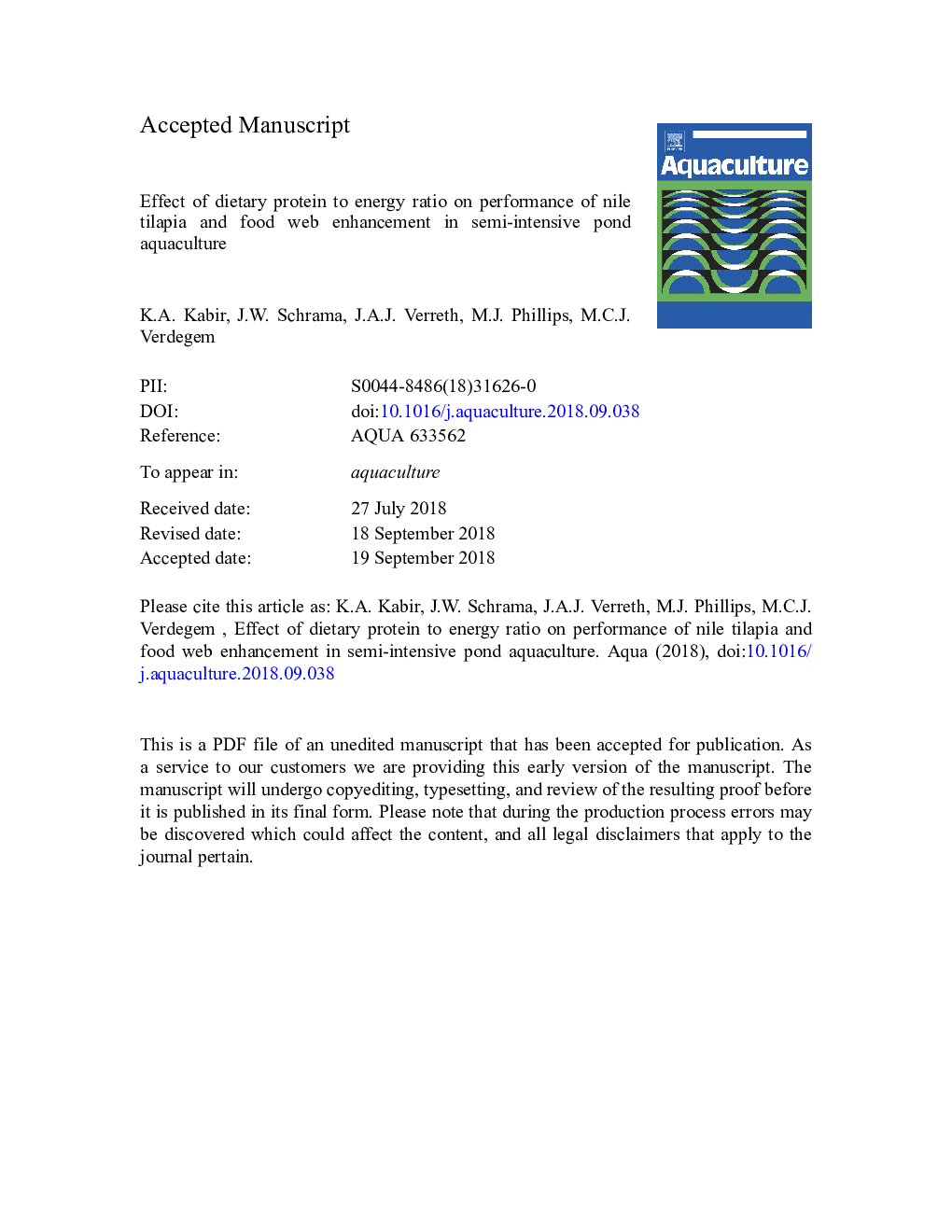| Article ID | Journal | Published Year | Pages | File Type |
|---|---|---|---|---|
| 10971203 | Aquaculture | 2019 | 38 Pages |
Abstract
When fish have only access to formulated feed, the optimal dietary protein to energy ratio (P:E) for tilapia ranges between 18 and 23â¯g.MJâ1. In pond culture, where natural foods complement administrated feed, increasing the carbon:nitrogen (C:N) ratio stimulates the natural food productivity. This study assessed if lowering the dietary P:E ratio (and thus increasing the C:N ratio of the feed input in the pond) below the optimal P:E ratio affects fish productivity, food web dynamics and nitrogen balances in semi-intensively managed tilapia ponds. Twelve ponds, each divided into three equally-sized compartments, were assigned to test the effect of two diets, which differed in P:E ratio (19 vs. 14â¯g.MJâ1). Three feeding levels (no, “low” and “high”) were nested in each pond in a split plot design. Initial fish biomass was 1166 (±16) g.compartmentâ1 and the experiment lasted 60â¯days. Decreasing P:E ratio enhanced tilapia production and specific growth rate (Pâ¯<â¯.05; 1195 vs. 985â¯g.compartmentâ1 and 1.76 vs 1.55%.dâ1). Body composition of tilapia was unaffected by diet and feeding level. Despite the difference in performance, final fat content was 5% of body weight and unaffected by treatments. Averaged over both diets, survival and feed conversion ratio increased with increasing feeding level (Pâ¯<â¯.001). Diet composition did not alter measured water quality, and abundance and diversity of the related parameters of the food web. The total amount of N accumulated in the pondâ was lower with the low P:E ratio diet (i.e., low protein diet). The data on N gain and N balance at the pond level suggest that the food web productivity was stimulated by reducing the dietary P:E ratio below the reported optimal levels in the literature. It is hypothesized that the optimal dietary P:E ratio is dependent on the culture intensity (extensive, semi-extensive or intensive pond culture).
Keywords
Related Topics
Life Sciences
Agricultural and Biological Sciences
Aquatic Science
Authors
K.A. Kabir, J.W. Schrama, J.A.J. Verreth, M.J. Phillips, M.C.J. Verdegem,
